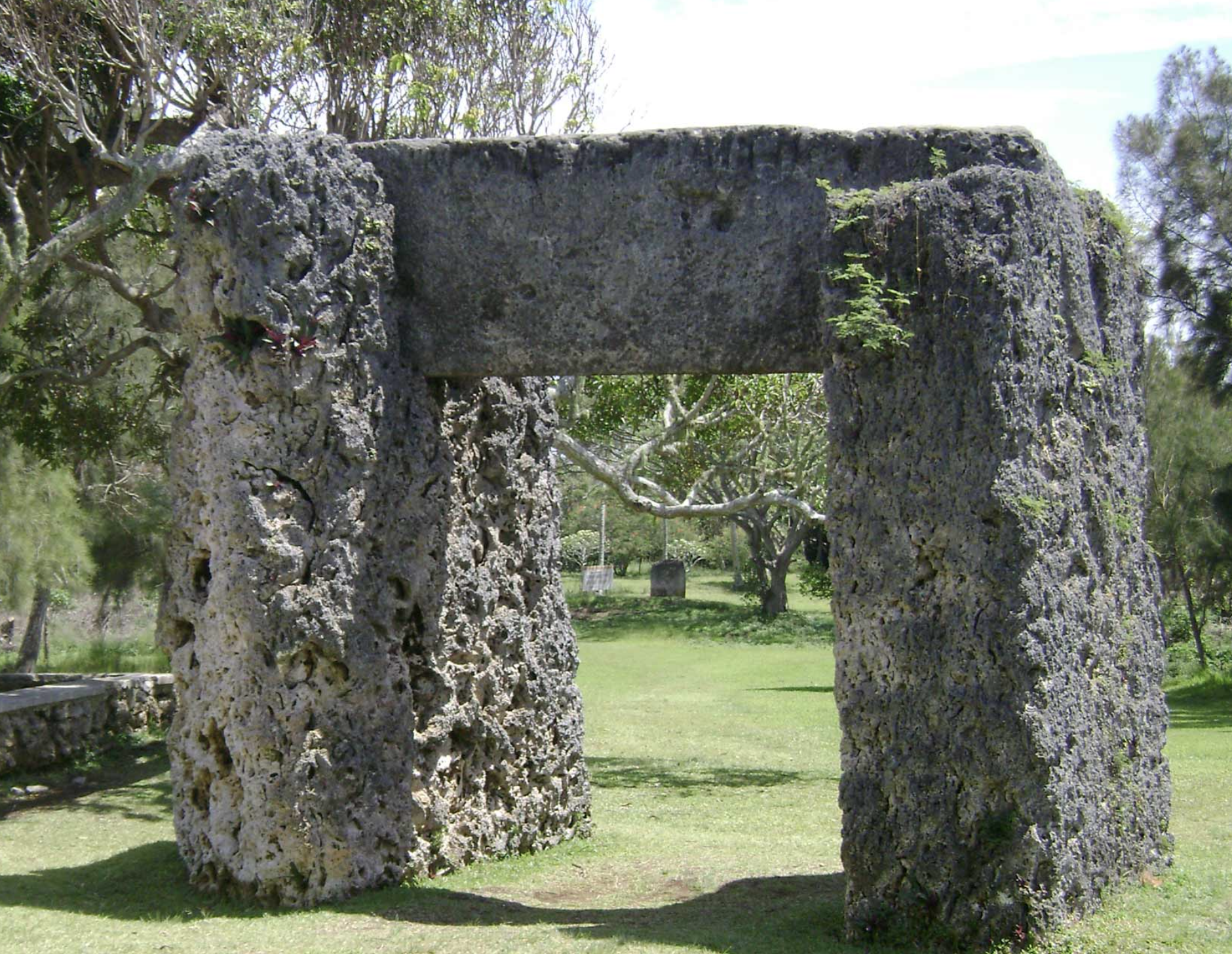Ha’amonga ‘a Maui in Tonga

Annotation
Ha’amonga ‘a Maui is a stone trilithon located on the island of Tongatapu in Tonga. A stone trilithon is a stone monument with two large vertical stones acting as a post for the third stone set horizontally across the top. This type of structure was common in megalithic monuments, including Stonehenge, and Ha’amonga ‘a Mau has been called “The Stonehenge of the Pacific.” Built in the 13th century by Tu’i Tonga king Tuʻitātui to honor his two sons, the name translates roughly to “the burden of Maui,” Maui being a prominent cultural hero throughout Polynesian mythology. The monument was constructed from coral limestone, with each stone weighing approximately 30-40 tons, and the structure is 5.2 meters high, 1.4 meters wide, and 5.8 meters long (17 feet high, 4.6 feet wide, and 19 feet long). There is another significant rock nearby, called ‘Esi maka faakinanga, which is traditionally believed to have been used as a stone throne that protected the king from assassins targeting him from behind. The structure may have had astrological significance regarding the position of the sunrise at both solstices and equinox, but scholars have not conclusively decided.
Credits
"Ha'amonga 'a Maui," Wikimedia Commons, 2008, https://en.wikipedia.org/wiki/Ha%CA%BBamonga_%CA%BBa_Maui#/media/File:Ha%CA%BBamonga.jpg.